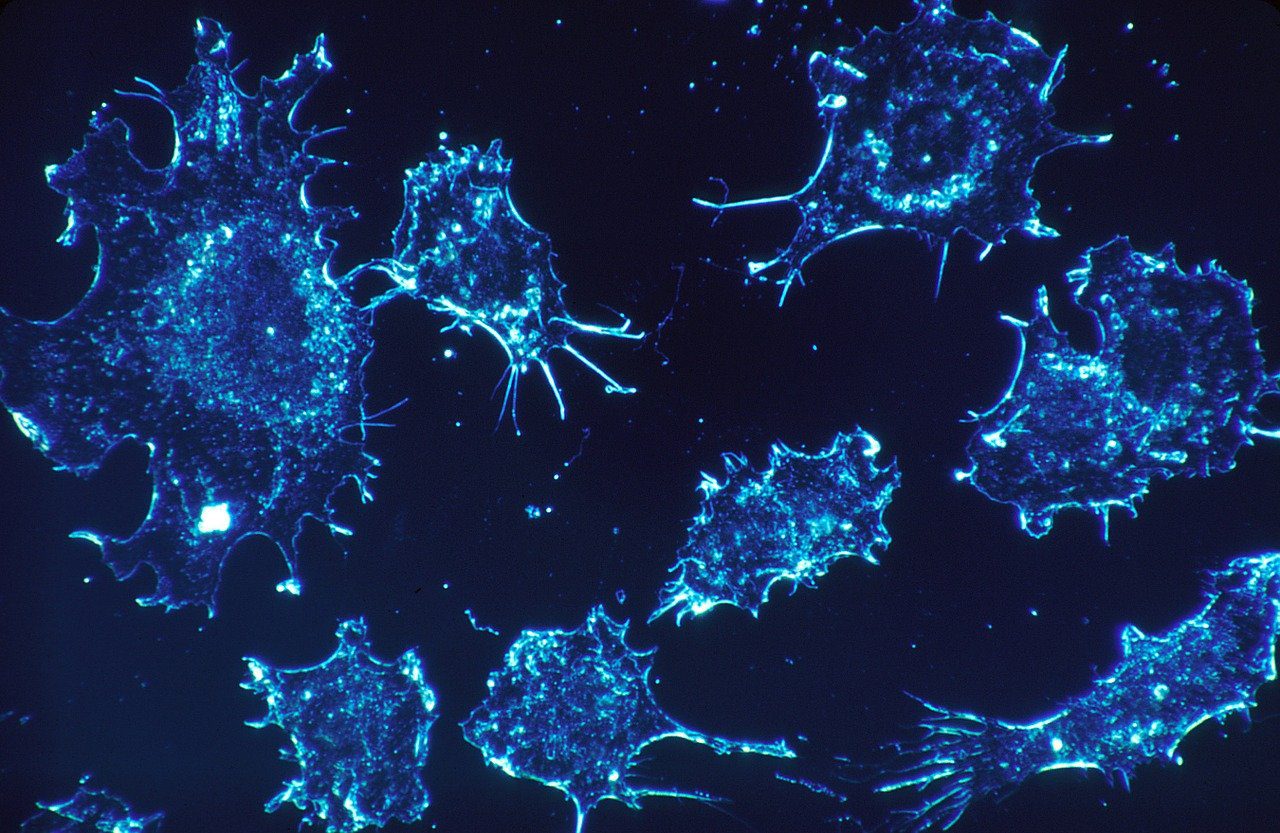Enormous progress has been made in basic cancer research over the decades. Today, it is quite well known what abnormalities in the structure and function of a cancer cell differ from a normal cell. The aim is to take advantage of these differences in drug development and in favor of complementary therapies.
Observing cancer cells
When adverse changes occur in a normal cell, our immune system notices this almost immediately and destroys and removes this damaged cell. Instead, cancer cells are better able to hide from the immune defense and only after forming enlarged tumors become exposed to our defense system. A strong immune defense is a good weapon against cancer and this is emphasized in modern drug development and complementary therapies.
The shape of the cancer cell is irregular and this feature can be utilized by the pathologist when examining tissue samples. Often, the nucleus of a cancer cell is enlarged and darker than in a normal cell. This, too, helps in detecting cancer cells.
Uncontrollable events
The division of cancer cells is uncontrolled and the goal of anticancer drugs and other cancer treatments is to stop this uncontrolled growth. Associated with this is the nasty feature of cancer cells, as it has been found that programmed cell death (apoptosis) does not work. Anticancer drugs and herbal medicine aim to promote cell death.
The cancer cell does not differentiate, but remain poorly differentiated. This mechanism can also be utilized in cancer therapies. The spread of cancer by metastasis means that the cancer cell needs to specialize and survive in a new environment (e.g., lung, liver, or pancreas). Metastases can be inhibited by interfering with the specialization of cancer cells with drugs and complementary therapies. Normal cells remain in their intended location. Cellular communication is increasingly understood and there is now knowledge that cancer cells are communicating poorly or incorrectly. Scientists believe that this difference in communication may in the future provide solutions for the treatment of cancer.
Differences in blood circulation
In terms of blood circulation, there is an exciting difference between a cancer cell and a normal cell. The growth of a cancerous tumor depends on the growth of new blood vessels (angiogenesis) while in healthy tissue, new blood vessels only form if tissue damage is repaired. Angiogenesis in a cancerous tumor is apparently necessary because the energy efficiency of individual cancer cells is significantly lower than in a healthy cell. Cancer cells rob the bloodstream of nutrients and energy for their own use. This waste of energy is the reason why it is important that cancer is detected early and eliminated.
Acidic, oxygen-free and an environment loaded with glucose promotes cancer growth
It is known that cancer cells thrive in an acidic environment and oxygen is harmful to cancer cells. Complementary therapies have ample potential to address this challenge. By taking care of eating alkaline food and taking care of a good oxygen supply, unfavorable growth conditions can be created for cancer.
It is typical of many forms of cancer that they are better able to utilize glucose for energy. Some forms of cancer are heavily dependent on sugar energy. When a dietary solution (ketogenic diet) provides cancer cells with less sugar energy, the growth of the cancer can be stopped. So-called PET imaging can take advantage of this feature. The large amount of carbohydrate ingested prior to PET imaging reveals cancerous colonies, as glucose-filled cancer cells are more clearly visible.
![]()
